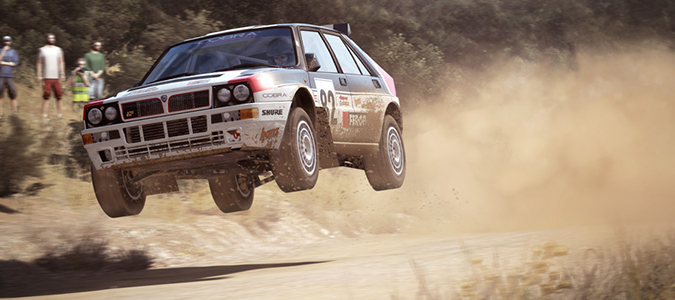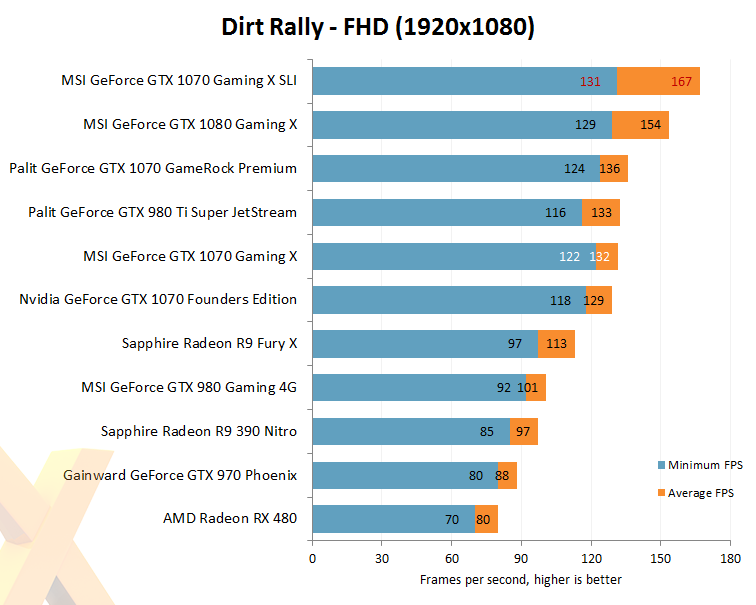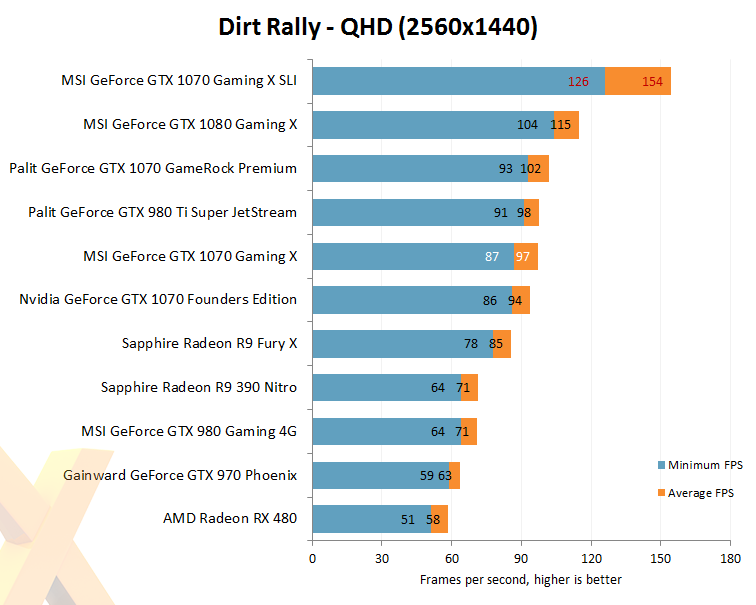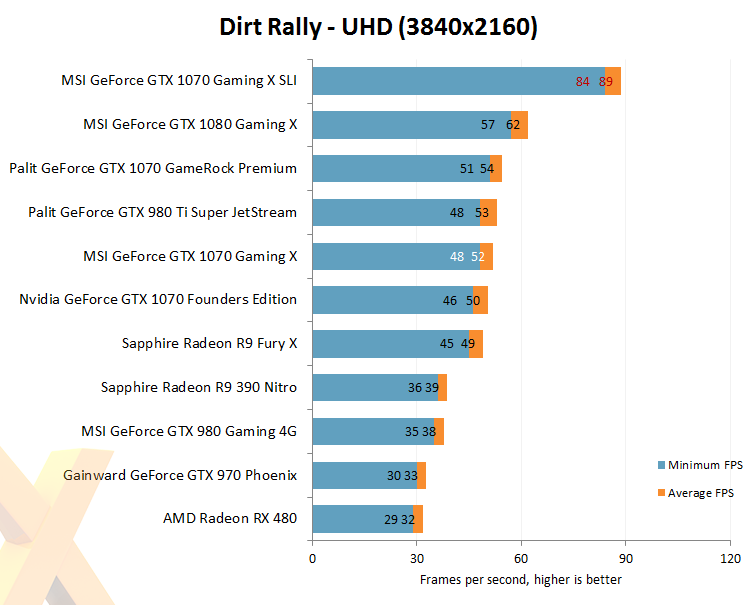Dirt Rally
 |
Looking for a racing game that's action packed, fun and exciting? Rallying is the genre that best ticks those boxes and Codemasters' Dirt Rally is a prime example. Arguably the British developer's best title in years, it uses the in-house Ego 3.0 engine to deliver high quality visuals and silky smooth gameplay.



A single GTX 1070 OC, such as the MSI, is hardly slow. Adding another takes apparent slowness totally out of the equation; there's a 70 per cent-plus leap in performance. The GTX 1070 pair produces frame rates that no single GTX 1080 can possibly match - numbers that may well be similar to the full-fat Titan P mooted to be arriving at Gamescom.
Showing average and minimum frame rates is normally a solid proxy for how the game plays out in real life. Adding a second card to the mix can bring frame-rate variability more into play. For example, though the average frame rate may be high, as is the case here, the slowest (or worst) frames may be substantially slower than a single GPU's due to the way they are sent out to the display. A simple method of determining if this is at least partially true is to look at the time taken to render the 99th frame percentile. This figure, quoted in milliseconds, is a measure of latency.

It's worth running latency numbers at 4K because it is the resolution that naturally imposes the most load on the graphics card. Keeping it simple, we have latency numbers for single and dual cards. What the first number, 12.99ms, shows is that 99 per cent of frames are rendered within this time, or, if taken over a full second, an 'average' of 77fps. The single card manages 47fps in this near-worst case scenario.
Point is, we notice the very slowest frames far more than those homogenised in the middle. This straightforward analysis highlights that SLI performance in Dirt Rally is very good. We visually noticed no slowdowns during the benchmark sequence on the dual-card setup, either, lending weight to the empirical results.









